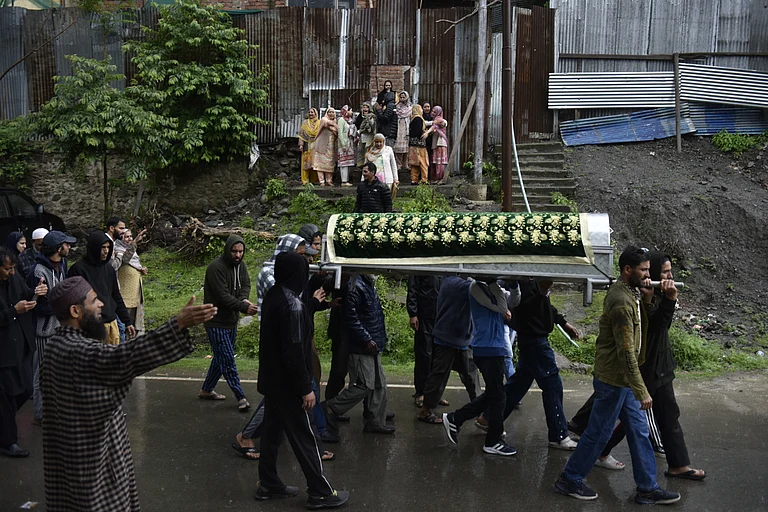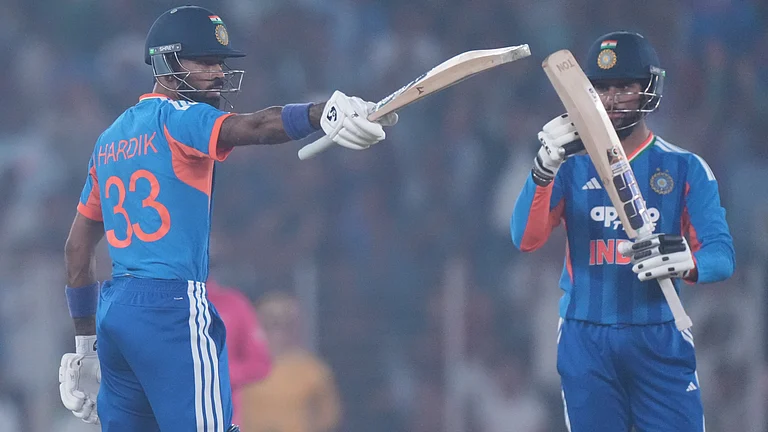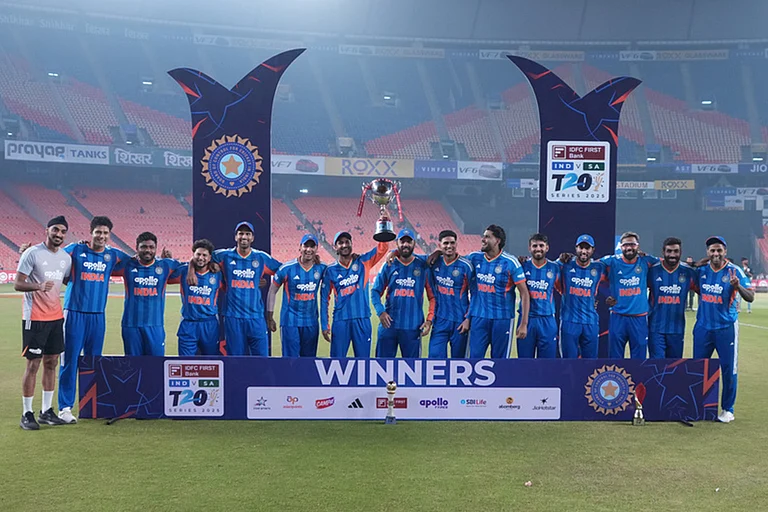For the past half a century, Anand Patwardhan has used the documentary, the spoken word and varied social interventions to explore the fatal contradictions frequently passing for governance in the Republic of India. Patwardhan recently turned seventy-five, which means that he has spent two-thirds of his life trying to figure out, among other things, why a potentially rich country like India is, tragically, home to crores of poor, homeless and unemployed men and women.
Thirty years ago, in 1995, Patwardhan and his associate, Simantini Dhuru, directed A Narmada Diary (60 minutes, colour). The film documents five years in the life of the Narmada Bachao Andolan, which led an agitation against the building of the Sardar Sarovar Dam on the river Narmada. In June 2014, the film became a talking point afresh with the approval given to Gujarat by the Narmada Control Authority to raise the height of the dam from 121.92 metres to 138.68 metres.
While Ahmedabad and New Delhi claimed that raising the dam height by 17 metres would benefit parched parts of Gujarat, activists were angered by what they saw as a move dictated by government high-handedness and insensitivity to the plight of
Adivasis and other ‘excluded’ sections of society. The activists argued that plain destruction was being inflicted on the victims in the name of development and progress. While the then Chief Minister of Gujarat, Anandiben Patel, expressed her “heartfelt gratitude” to Narendra Modi and tweeted that achchhe din aa gaye hain (good times have arrived), Medha Patkar, the Narmada Bachao Andolan leader and renowned social activist, expressed her strong disapproval.
Patkar was quoted in the press thus: “The decision taken is undemocratic as the government has not considered the fact that 2.5 lakh people are living in the area, which will submerge due to the raising of the height of the dam. The government has neither given us any hearing nor made any attempt to know the ground reality before deciding to go forward with the Sardar Sarovar Dam construction to its final height.”
Several films have been made on the threat that the dam posed to the life and property of lakhs of endangered Adivasi and Dalit families of four states—Gujarat, Maharashtra, Madhya Pradesh and Rajasthan—that come within the purview of the Narmada dam project, but arguably none has captured the threat and agitation by activists to defeat it, as effectively as Patwardhan and Dhuru’s A Narmada Diary.
In a style that is both highly visual and penetratingly interrogative, the filmmakers questioned the very ethics of large dams being built with foreign loans (in this case, from the World Bank) and benefitting the well-off sections of urban society. Even as the affected Adivasis spoke of the dangers of the unsettlement they faced, the film portrayed an entire way of life enveloping cultural and civilisational norms and values being washed away, with great compassion and suppressed anger. The aesthetics of the film slowly grows out of the absence of ethics on the part of politicians and planners claiming to be working for the good of the people. The poetry of protest is expressed in a strikingly earthy idiom.
At the time A Narmada Diary was made, Patwardhan had pointed out that the gigantic ‘development’ project on the banks of the Narmada “has been criticised as being both uneconomical and unjust in that its main beneficiaries will be the well-to-do in urban centres and its sacrificial victims, the rural poor. When completed, the dam will have inundated 37,000 hectares of land, including fertile fields and forests, displaced over 200,000 people, and cost Rs 400 billion. Environmental, cultural and human costs, as is usual in such mega-projects, have never been fully estimated.
Patwardhan went on to make a telling comment on what it was that made the bureaucracy and the political class almost without exception, take a keen interest in ensuring the Sardar Sarovar Dam see the light (or more likely, the darkness) of day. “For nearly a decade, the people of the Narmada Valley, a majority of them Adivasis, have resisted the dam. In the face of their unity, the World Bank had to withdraw its funding for the project. But Indian government officials, either induced by kickbacks that often accompany large projects or seduced by the now-discredited rhetoric of the ’50s when large dams (like the Hirakud in Odisha or the Bhakra-Nangal in Punjab) were considered to be ‘the temples of modern India’, have steadfastly refused to halt construction.”
Patwardhan was speaking of a more hopeful day when he observed that “in a situation where government resettlement and rehabilitation programmes have proved inadequate and inappropriate, the Narmada Bachao Andolan has emerged as one
of the most dynamic struggles being fought in India today. With their insistence on non-violence and their determination to drown rather than shift out of their homes and land, the people of the Narmada Valley have become symbols of a global struggle against unjust and unsustainable development.”
Much water has flowed down the Narmada since those words were spoken, and the resistance once mooted by the villagers and their supporters from urban areas exists now more in spirit than in substance. Political developments in New Delhi and several state capitals have given unimaginable power to the forces of corporatization. This makes it extremely difficult for activism in any form to emerge from the ranks of the rural proletariat or the urban intelligentsia.
Yet, oppose one must; oppose crimes against humanity wherever they are being committed, using ‘national interest’ or ‘public good’ as an excuse; oppose with whatever resources that are available to the nay-sayer and the whistle-blower. One is reminded of the saying: “To forget the past is to forfeit the present and the future.” One way not to forget the past is to re-visit Patwardhan’s socio-political documentaries relating to, among other subjects, the Emergency, the Khalistani insurgency, or the Narmada Bachao Andolan, seeking in each a subtle sign, a hidden signal, an unnoticed source of strength from where to begin the struggle once all over again.
Vidyarthy Chatterjee writes on cinema, society, politics. He is the author of the award-winning book, Calcutta Films—A Joshy Joseph Trilogy.



























